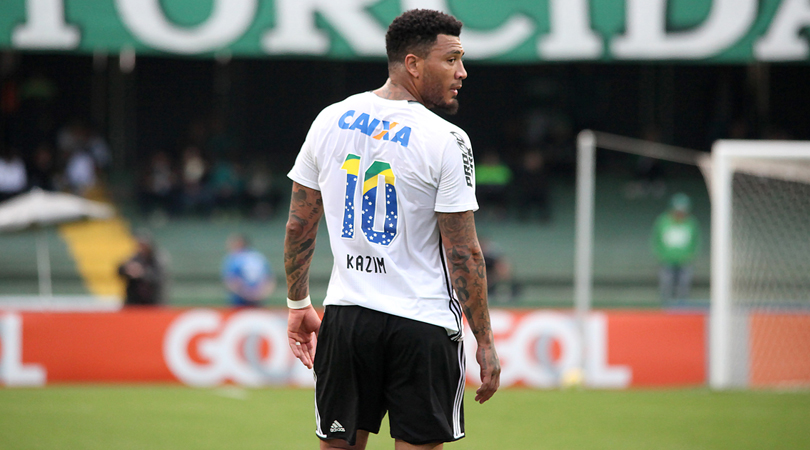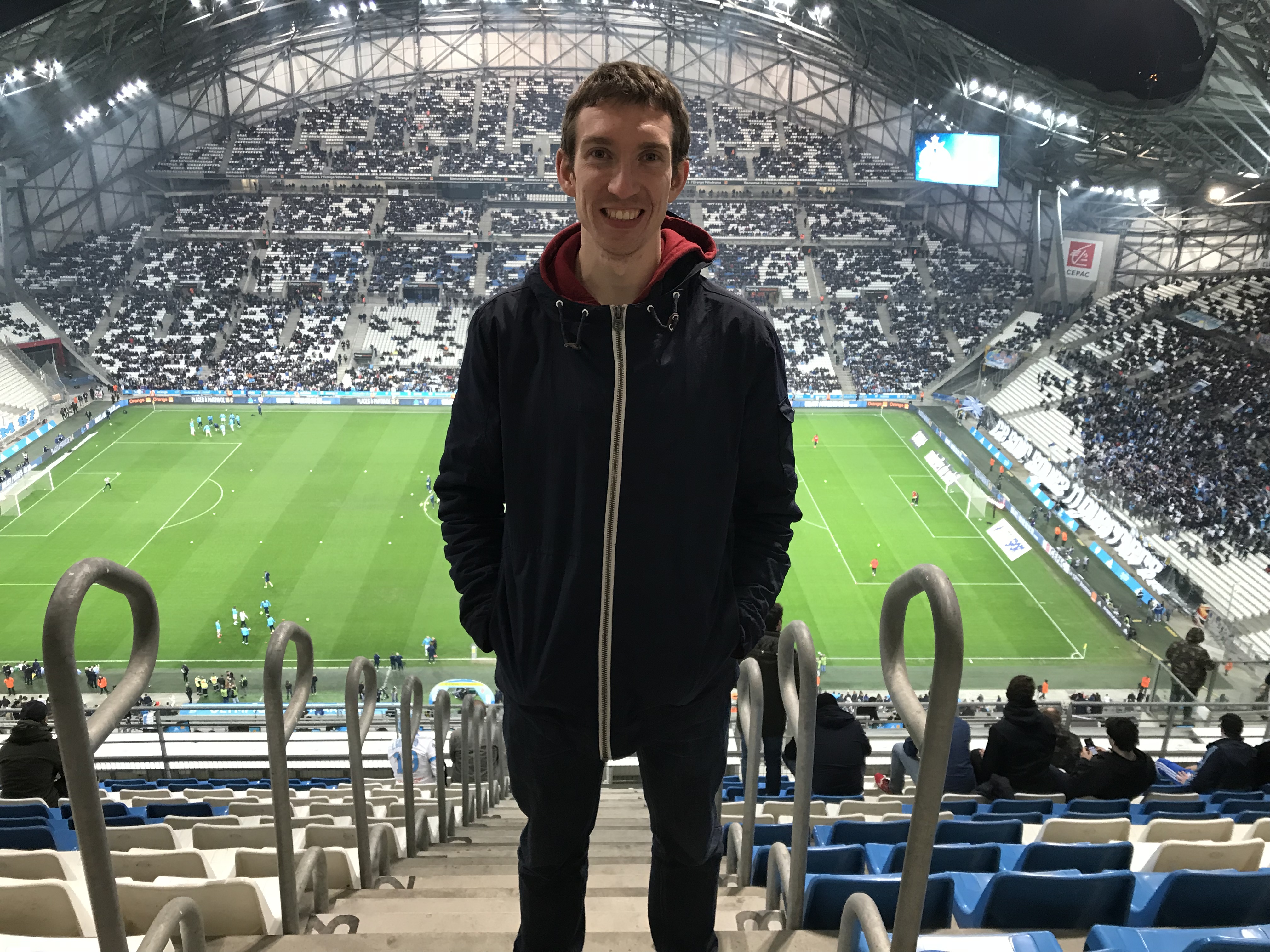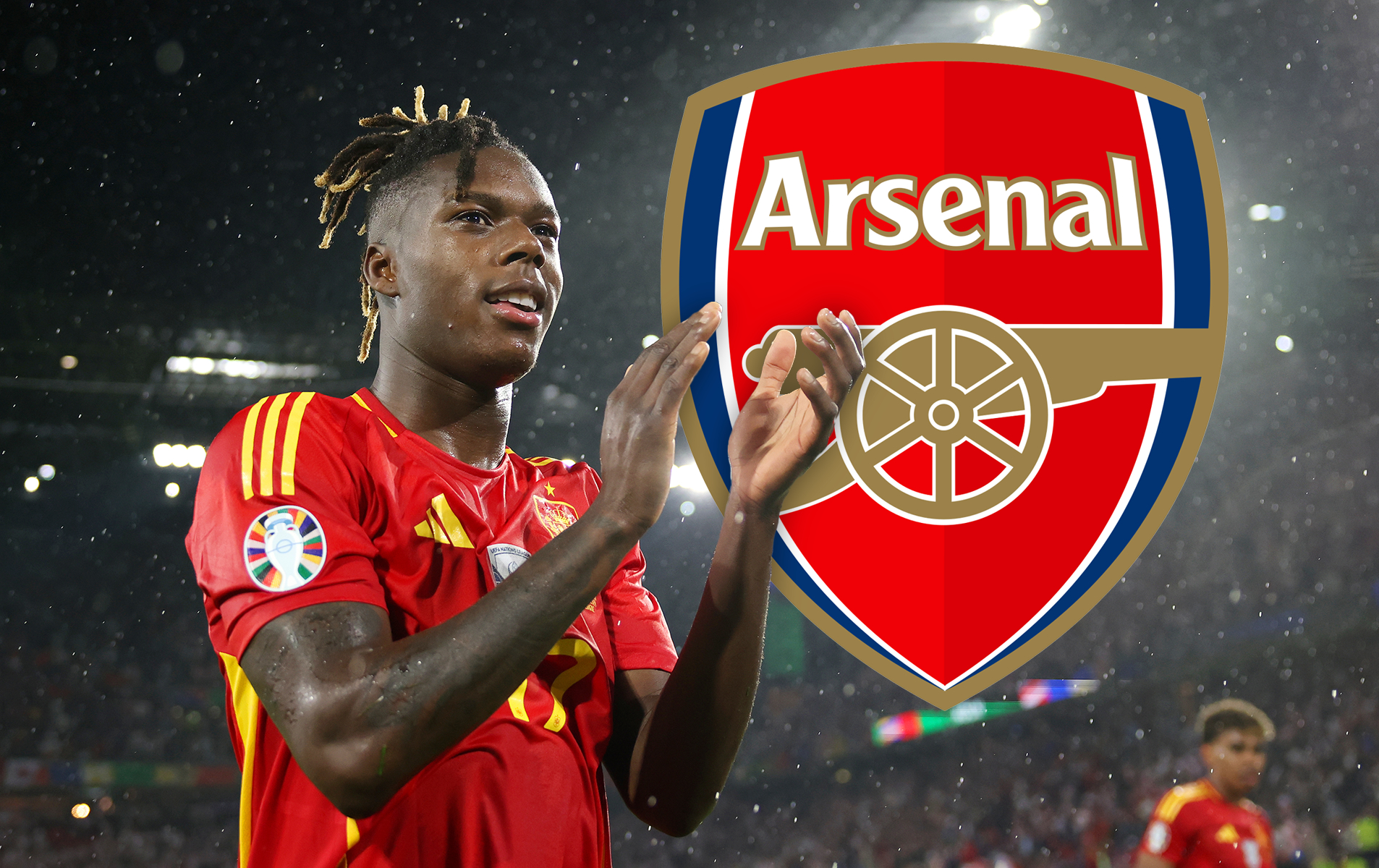Two days' work, 60 people... for 15 frantic minutes: Behind the scenes at the FA Cup draw
FFT sent Greg Lea to the BT Tower for Monday night's fourth-round ball picking to discover the endeavour behind the draw
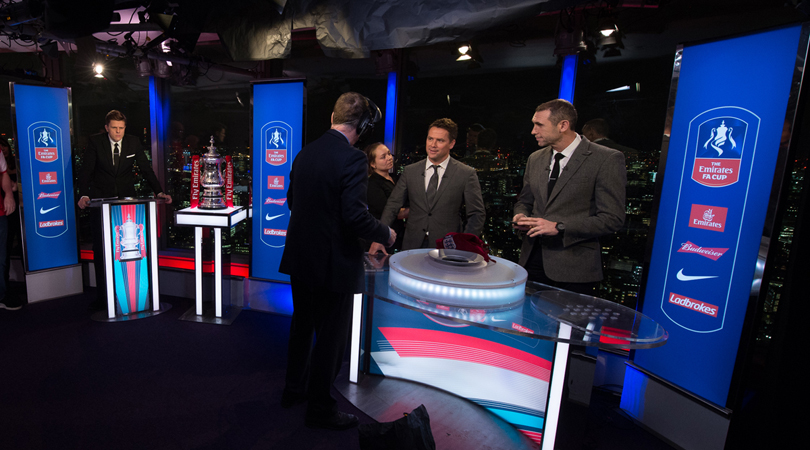
It's an event that’s repeated several times a season across numerous competitions, but there's still something rather thrilling about a draw for the next round of a knockout tournament.
That mix of excitement and apprehension will be a familiar feeling to football fans everywhere, particularly when the draw in question is as straightforward and the competition as inclusive as the FA Cup.
“It’s a pleasure to be involved in something like this,” says Stephen Cook, head of live football at BT Sport and just one of the many people FourFourTwo meets on our tour of BT Tower, the venue for this year’s fourth-round draw. “Every fan of the game looks forward to nights like this, and I’m no different. It’s so easy to get the pundits involved, too – you just ring them up and mention the FA Cup and they agree to do it straight away.”

Tech-spertise
I’ve been chatting with Jake [Humphrey, the draw’s presenter] over the weekend, preparing the facts. There’s not much time to intervene when he’s live on air, so it’s essential we get it right beforehand
After arrival, we’re whisked up to the production area to get a glimpse of some of the preparatory work that goes into the show. It’s taken two days (!) to get all of the necessary equipment in place, and although there’s still two-and-a-half hours to go until the live broadcast begins, various members of staff are hurrying around to check that nothing’s out of place.
“There’s about 60 people involved tonight,” explains producer Matt Curtis. “In terms of my own role, I’ve been chatting with Jake [Humphrey, the draw’s presenter] over the weekend, preparing the facts and figures so he’s got something to say about each team when they’re pulled out of the hat. There’s not much time to intervene when he’s live on air, so it’s essential we get it right beforehand.”
Curtis is also keen to make us aware of some of the intricacies that the average viewer – including FFT – wouldn’t necessarily be aware of when they’re watching the draw unfold from the comfort of their living rooms.
Get FourFourTwo Newsletter
The best features, fun and footballing quizzes, straight to your inbox every week.
“It’s important that the guys making the draw, Michael Owen and Martin Keown, use the same hand each time they pick out a ball,” he explains. “They also need to make sure the number written on the ball is visible, rather than being obscured by their fingers. It sounds simple but it does take a bit of getting used to – that’s why we do around four rehearsals.”
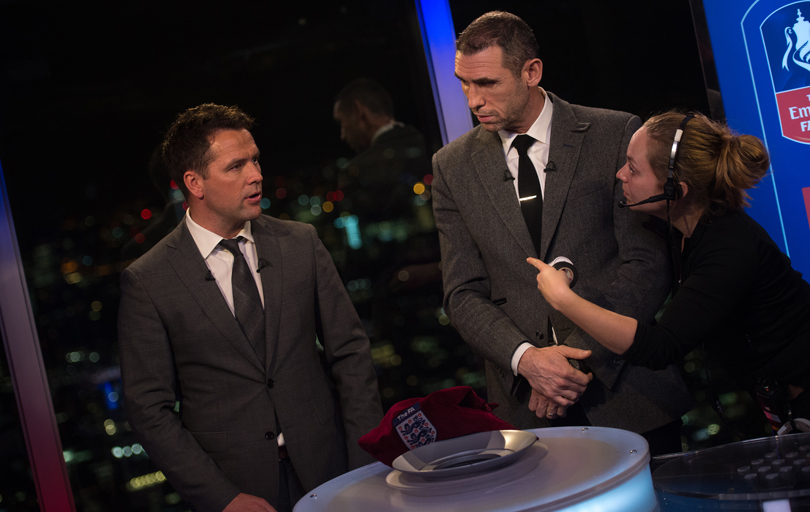
Next up is a quick chat with director Séan Hughes, who’s responsible for deciding which of the nine available camera shots is shown on screen at any one moment.
“It’s all about the timing,” Hughes tells FFT as a statistician researches relevant facts about Lincoln City in the seat beside him. “Five cameras will be centred on the draw itself, while we’ve also got one looking out at the centre of London from our vantage point here at the Tower. There’s plenty to work with.”
“I’d choose to relive that game”
If you asked me to relive one day in my life, I’d choose the 2001 FA Cup Final
It’s now time to grab a few words with some of the more well-known faces involved in the draw, as Owen and Keown take a break from rehearsals to discuss their own memories of the FA Cup.
“As a youngster I used to play the final in my back garden every year,” says the former Arsenal defender, who won the competition with the Gunners in 1998, 2002 and 2003. “It was the reason I came into football; that dream of one day wanting to do it yourself. If it wasn’t for the FA Cup, I might not have got into the game.
“I had a lot of goes at trying to win it. Don Howe would tell us as youngsters that you only get around 10 chances and you don’t want to blow it. I thought I was never going to get there so it was great to finally win it in 1998, although I still can’t work out how we lost to Liverpool three years later...”
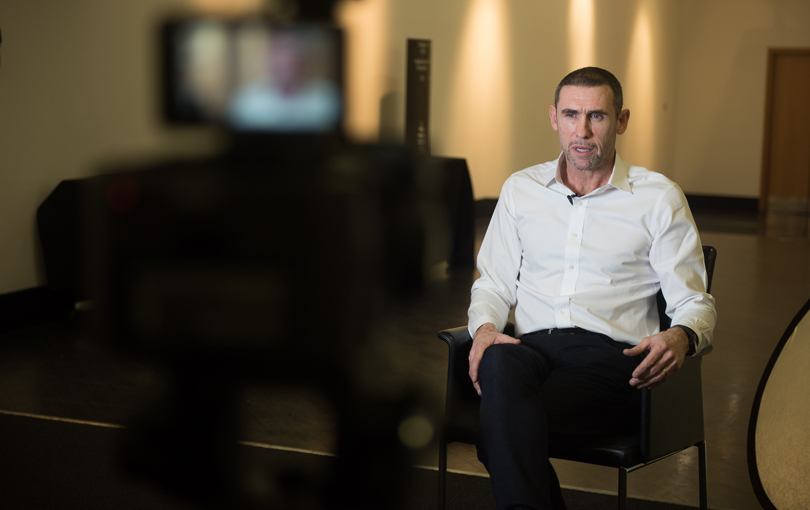
Two goals from BT Sport's Owen turned that 2001 final on its head, Arsenal throwing away a one-goal lead to lose 2-1 at the Millennium Stadium.
“My memories [of that match] are quite vivid, really,” the ex-Liverpool striker recalls, his face lighting up as he casts his mind back to the Reds’ sixth FA Cup triumph. “If you asked me to relive one day in my life, I’d choose to relive that game.
“It was just the most amazing day from start to finish; the weather was great, the stadium was great, the opposition were amazing. To do what I said I was going to do when I was a five-year-old kid – score the winning goal in an FA Cup final – was pretty mad when I look back on it now.”
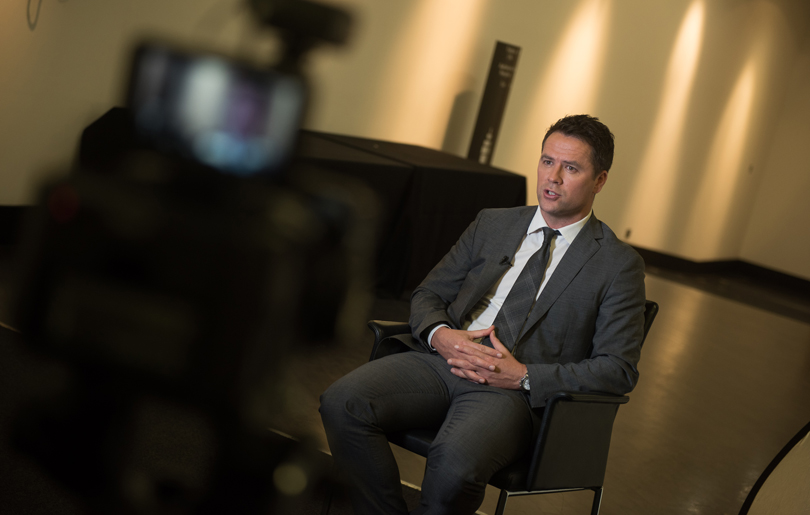
The worst that could happen
You’re hearing a director, producer, PA, sound guy and stats guy in your ear every time a ball is pulled out, and you’ve just got to try and pick out the relevant bits of information
There’s also time to pull up a chair with Humphrey, who’s fully aware of the logistical pressures ahead despite his relaxed demeanour.
“The draw’s a funny one because it’s a really short programme – only about 10 or 15 minutes,” he explains. “It’s different, too, because it’s heavily scripted and you pretty much know what’s going to happen, unlike a live game.
“But this is much more nerve-wracking, largely because the chances of something going wrong are greater. You’re also hearing a director, producer, PA, sound guy and stats guy in your ear every time a ball is pulled out, and you’ve just got to try and pick out the relevant bits of information.
“I do like the challenge, though – that’s where the thrill comes from.”
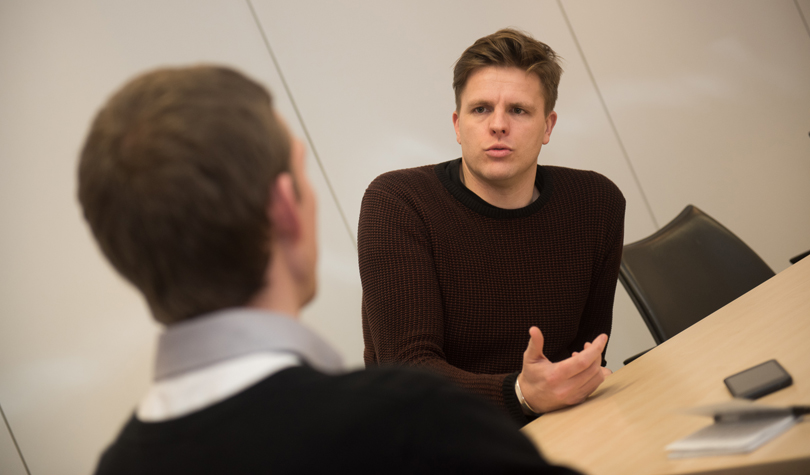
After a quick bite to eat it’s time to head back upstairs, where the figurative kick-off is now just a few minutes away. A final rehearsal ends with Manchester City being paired with Watford in all-Premier League clash, before cameramen, runners and photographers take up their positions ahead of the broadcast.
“20 seconds!”
“What’s the worst that can happen?” Humphrey asks, looking around at a group of competition winners who are witnessing proceedings from close by.
“I drop the balls and they spill all over the place,” Owen quips.
“10 seconds!”
“Can you imagine?” Humphrey replies, shaking his head and grinning as he looks down at the notes in front of him.
“Five seconds!”
Then, after a quick run-through of the teams still involved, the draw gets under way. An all-East Midlands clash between Derby and Leicester prompts the biggest reaction from those watching on, while Manchester United vs Wigan, Chelsea vs Brentford and Wimbledon or Sutton vs Cambridge or Leeds also catch the eye.
Less than 10 minutes after Tottenham are the first ball out of the hat, BT’s coverage switches back to the Abbey Stadium, where Cambridge and Leeds are set to battle it out for the prize of a trip to south London in three weeks’ time.
The draw for the fourth round of the FA Cup is over in a flash, but the work involved in making it run as smoothly as possible is eye-opening. Turns out there’s quite a lot more to it than simply picking balls out of pots...
BT Sport is your home of unmissable live football from the Emirates FA Cup and Premier League. Visit btsport.com for more info.
Greg Lea is a freelance football journalist who's filled in wherever FourFourTwo needs him since 2014. He became a Crystal Palace fan after watching a 1-0 loss to Port Vale in 1998, and once got on the scoresheet in a primary school game against Wilfried Zaha's Whitehorse Manor (an own goal in an 8-0 defeat).
